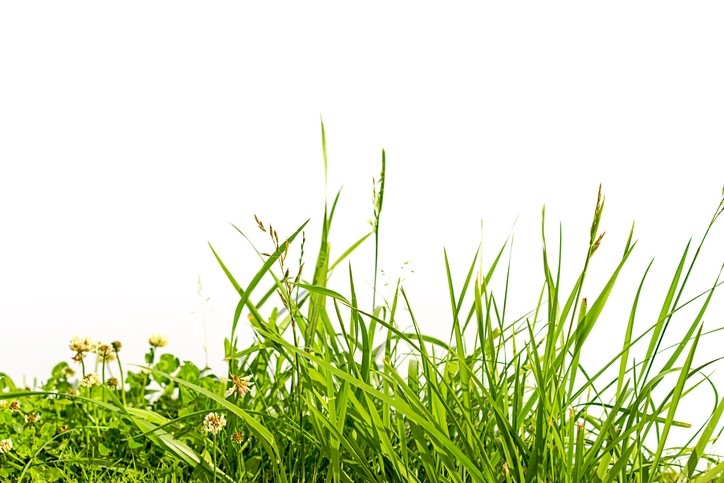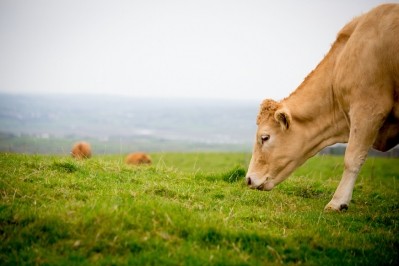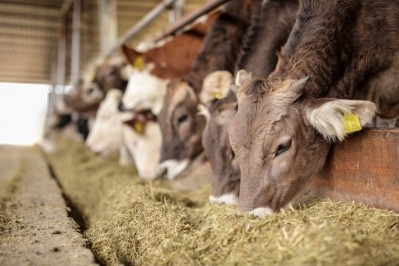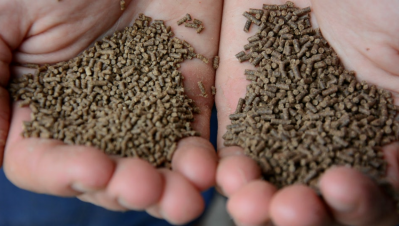US: Forage protein may not be what it once was

The study of forage quality in the US was on the back of a similar project conducted in South Africa, said Joseph Craine, researcher with Jonah Ventures and corresponding author for the project.
Researchers from the University of Maryland Center for Environmental Science and Texas A&M Agrilife Research and Extension Center were also included in the evaluation team.
One goal of the forage study was to discover if there was a change in the nutritional quality of forages across the US, Craine told FeedNavigator. “We wanted to see if there was a trend over time,” he added.
The project sought to quantify the “trajectory of nutritional stress” forage-fed cattle face, said the researchers in the paper.
Overall, the group found that the decrease in protein levels in forage may mean that grass-fed cattle are increasingly stressed for protein, a factor that could be reducing weight gain, the researchers said. “In economic terms, the replacement costs of reduced protein provision to US cattle are estimated to be the equivalent of $1.9bn annually,” they added.
“Pay attention to protein, protein has been declining,” said Craine. “We worry about global warming for a lot of different reasons and elevated C02, but there are other things that are going on at the same time – this is one of them. We’re potentially seeing broad-scale changes in our how grasslands are changing and we don’t monitor them, and if we don’t monitor them [we won’t know].”
CO2 and plant protein
When plants have access to higher levels of C02, they may photosynthesize more and grow more cell walls, which dilutes the protein in the plant, he said. Longer term there may be a type of feedback loop established where plants start to return less nitrogen to the soil.
“That’s a short-term effect and long-term effect and we’re still kind of working through those,” he said.
Crude protein concentration in the diet can limit weight gain, the researchers said. However, there has been little work done to understand how protein responds to changing environmental conditions and if extreme events such as droughts alter the protein content of forages.
Study details
The group assessed changes in cattle diet quality regarding both short-term incidents, like a drought, and longer-term change, the researchers said. They used a long-term dataset including almost 36,6000 independent measures of cattle diet quality collected in a 22-year period.
The set included crude protein and digestible organic matter concentration.
The dataset had been established by the Grazingland Animal Nutrition Lab at Texas A&M, they said. Since 1994, the lab had been collecting fecal samples from grazing cattle and evaluating them with near-infrared spectroscopy.
Forage chemistry was derived using fecal matter and a set of calibration equations.
“The patterns that we saw were consistent with the predictions for elevated C02,” said Craine. “Knowing that CO2 was going up and protein was going down – but there are always alternative processes that could [be involved].”
The drop in protein content also may be a longer-term consequence of the way cattle herds have been grazed, he said. “We grow cattle on grassland and rangeland and then we pull them off – it’s possible that we’ve just been running down the soils and that’s what’s been driving down the protein,” he added.
By removing cattle from pastures the nutrients they consume may not be replaced, he said. “We’ve been slowly mining minerals and we can’t separate those three hypothesis and all three could be contributing,” he added.
Cattle weight gain was modeled based on information on cattle growth, forage quality and weather to establish an average daily gain for different kinds of cows, the researchers said. Calculations were done every 10 days for days 60-329 of growth and no protein or energy supplement was added.
Economic costs of the protein debt also were established, they said.
The overall measured protein was found to be lower for the 2005-15 period than for the 1994-04 period, they said. However, digestible organic matter increased in the later years.
Accounting for inter-annual variation and drought effects on crude protein, protein was found to be declining or tending to drop in all 10 regions considered during the summer for the entire period, they said. The largest drop was in the prairie region with the smallest in the southeast.
“We’ve lost the equivalent of half of Iowa’s soybean production – half of the protein produced in Iowa from soybeans is how much we’ve lost,” said Craine.
Remediation efforts
For producers working with forage-fed cattle, the first element to consider is to pay attention to the existing protein level, said Craine. However, there could be several different ways to manage the issues of protein level depending on the circumstance and how the cattle are being raised.
“In a lot of places, if you can pay attention to the protein concentrations and learn more about the high protein plants that the cattle consume then there is a chance to promote those plants,” he said. “[Or] figure out how to get more legumes into the system.”
There also are seasonal patterns that have to be considered as protein content can be higher when plants start to grow, he said. “Once you get further into the season the plants have lowered the protein concentration and that’s when getting it into the system is more important,” he added.
For producers with more control over the forage area it could be worth considering the nature of the plants found in pasture and what additional types might work in that location, he said. “That’s when local knowledge is important,” he added.
There isn’t one prescription likely to work in every scenario, said Craine.
Source: Environmental Research Letters
Title: Long-term declines in dietary nutritional quality for North American cattle
Authors: Joseph Craine, Andrew Elmore and Jay Angerer
DOI: doi.org/10.5061/dryad.n856r















